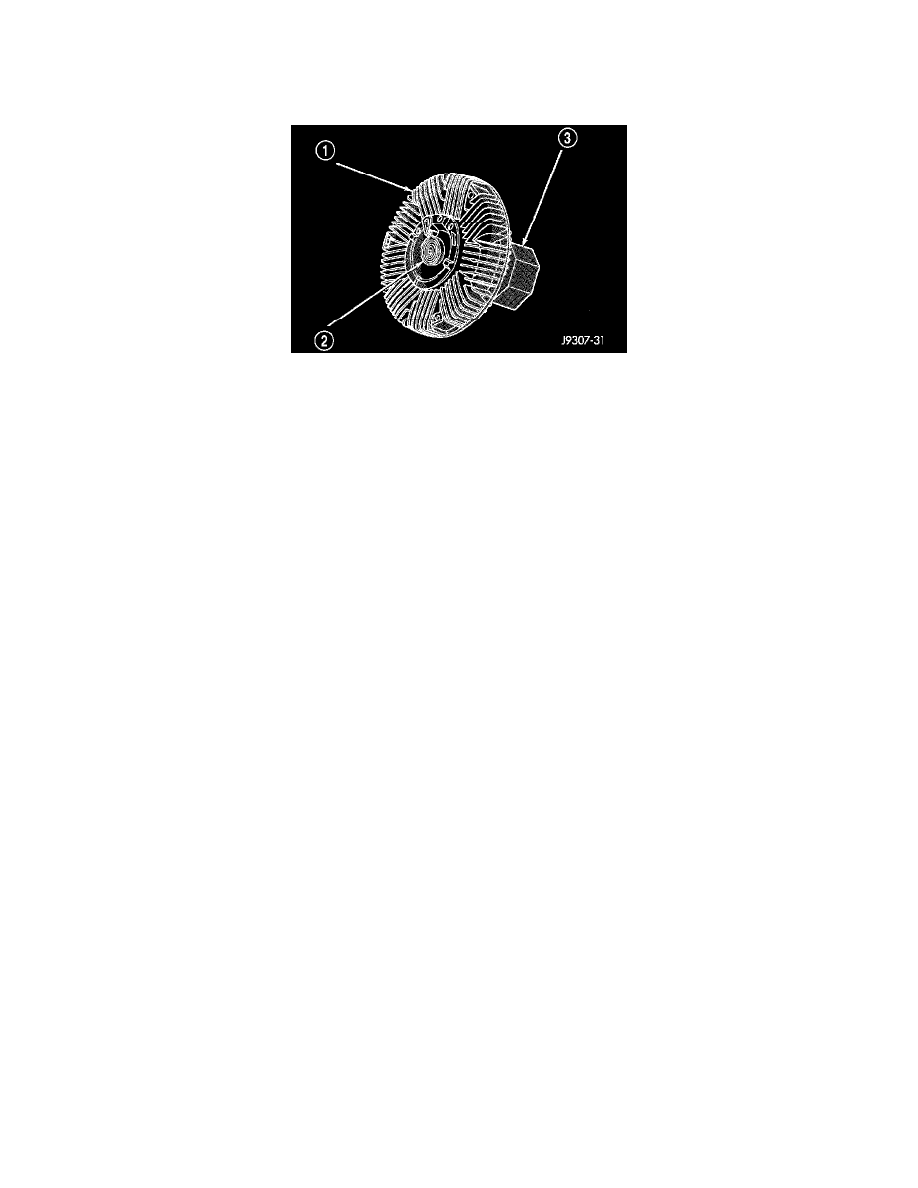Commander 4WD V8-4.7L VIN N (2006)

Fan Clutch: Description and Operation
VISCOUS CLUTCH-FAN DRIVE
DESCRIPTION
CAUTION: Engines equipped with serpentine drive belts have reverse rotating fans and viscous fan drives. They are marked with the word
REVERSE to designate their usage. Installation of the wrong fan or viscous fan drive can result in engine overheating.
CAUTION: If the viscous fan drive is replaced because of mechanical damage, the cooling fan blades should also be inspected. Inspect for fatigue
cracks, loose blades, or loose rivets that could have resulted from excessive vibration. Replace fan blade assembly if any of these conditions are found.
Also inspect water pump bearing and shaft assembly for any related damage due to a viscous fan drive malfunction.
The thermal viscous fan drive is a silicone-fluid-filled coupling used to connect the fan blades to the water pump shaft. The coupling allows the fan to
be driven in a normal manner. This is done at low engine speeds while limiting the top speed of the fan to a predetermined maximum level at higher
engine speeds.
An electrical cooling fan located in the fan shroud aids in low speed cooling, It is designed to augment the viscous fan, However, it does not replace
the viscous fan.
OPERATION
A thermostatic bimetallic spring coil is located on the front face of the viscous fan drive unit. This spring coil reacts to the temperature of the radiator
discharge air. It engages the viscous fan drive for higher fan speed if the air temperature from the radiator rises above a certain point. Until additional
engine cooling is necessary, the fan will remain at a reduced rpm regardless of engine speed. Normally less than three hundred (300) rpm.
Only when sufficient heat is present, will the viscous fan drive engage. This is when the air flowing through the radiator core causes a reaction to the
bimetallic coil. It then increases fan speed to provide the necessary additional engine cooling.
Once the engine has cooled, the radiator discharge temperature will drop. The bimetallic coil again reacts and the fan speed is reduced to the previous
disengaged speed.
